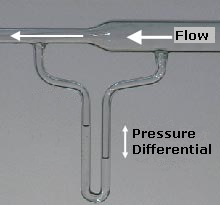Well "flow" sure makes the keyboards go!
I couldn't add any to the group mind, except for some levity!
Well, I had some flow going last night, but that just gave me some pressure in the head this morning! :laughing:
For the formula units folks, I pulled out a reference for the resistance units in the SI system. Note the Hydraulics entry in Table 3.1 of the attachment*.
I think Newtons second law is probably more applicable here, since we're talking about "making it go", F=ma, or a=F/m.
Now think about the
causality of what the laws of motion (equations) say in terms of cause and effect. Cause is the input and effect is the output. For a=F/m, the force is the input (or what we control) and the output is the resultant acceleration.
Now applying causality to the "makes it go" myth The two different "make it go" scenarios for simple hydraulic systems are as I stated earlier;
1) Positive displacement pumps: Pressure = Flow x Resistance. These pumps can only produce flow, thus flow is causing the pressure according to the causality of the defining relationship.
2) Centrifugal pumps: Flow = Pressure/Resistance. These pumps produce pressure (input or cause) and the pressure results in flow (output or effect) according to the causality of the defining relationship.
So in case 1, Flow causes pressure which converts to force which causes acceleration.
In case 2, pressure converts to force which causes acceleration.
This is just an exercise in thinking which does extend to real world applications. This is a process that allows logical steps between understanding, design and implementation. I think we can all agree that when the rubber hits the road (or the oil hits the piston face:laughing

and you boil down the "myth", Newton says it best via the Second Law of Motion;
a=F/m
which says motion is the result of a force applied!
*Karnopp, Dean. (2006).
System Dynamics: Modeling and Simulation of Mechatronic Systems. Hoboken New Jersey: John Wiley and Sons, Inc.

